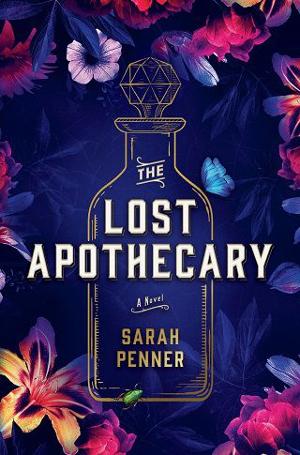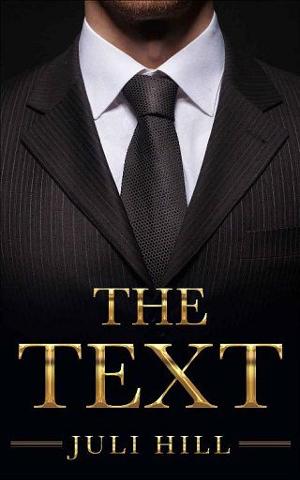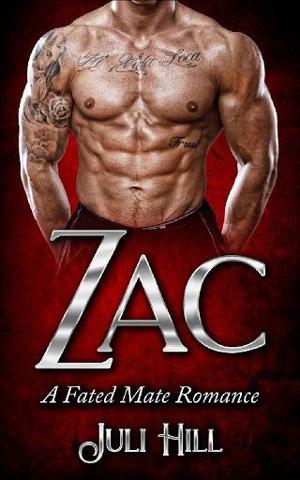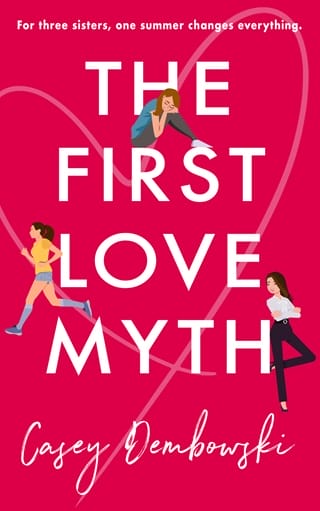Chapter 14
14
Caroline
Present day, Tuesday
With only a few hours left before James’s arrival, I didn’t have time to investigate the gated-off door, but my curiosity, piqued yesterday, now felt on fire. It seemed that every bit of information gleaned, beginning with the vial, then the cryptic hospital note about Bear Alley, and now the door at the back of the alley, presented a new piece of a tantalizing puzzle. I resolved to do more digging and return when I could.
As I made my way out of Bear Alley, the sun slipped behind a cloud, plunging me into a cool shadow. Assuming the apothecary did exist, I envisioned what she may have looked like: an elderly woman with white, scraggly hair, frayed at the ends from spending so much time over her cauldron, hurrying out of the cobblestoned alley in a black cape. Then I shook my head at my own imagination: she wasn’t a witch, and this wasn’t Harry Potter.
I thought back to the hospital note. Whoever wrote the note had said the men are dead—plural. It was frustratingly vague. And yet, if more than a few people had died because of the apothecary, there should be some reference, some record of the apothecary’s renown, online.
As I turned back onto Farringdon Street, I pulled out my phone, opened up my browser search bar and typed London Apothecary Killer 1800s.
The results were mixed: a few articles on the eighteenth-century gin obsession; a Wiki page on the Apothecaries Act of 1815; and an academic journal page on bone fractures. I clicked on the second page of search results, and a website with an inventory of London’s old criminal court—the Old Bailey—seemed the best search hit so far. I used my finger to scan the page, but it was terribly long and I had no idea how to do a document search on my cell phone. A moment later, the amount of data on the site froze my web browser. I cursed, swiping up on my phone to close the app altogether.
Frustrated, I sighed. Did I really think I could solve this with a simple web search? James would probably blame it on inadequate research techniques, which might have been better primed during undergrad if I’d read more textbooks and fewer novels during my long days at the university library.
The library. I jerked my head up and asked a passerby for the nearest Underground station, crossing my fingers that Gaynor would be working again today.
A short time later, I stepped inside the Maps Room, glad that I wasn’t rain-drenched and covered in stink like last time. I spotted Gaynor immediately, but she was in the middle of helping someone at a computer, so I waited patiently for her to finish.
After a few minutes, Gaynor made her way back to the desk. Upon seeing me, she gave me a smile. “You’re back! Did you learn anything about the vial?” she asked cheerily. Then she feigned a serious look. “Or did you go mudlarking again, and you’ve brought me another mystery?”
I laughed, feeling a surge of warmth toward her. “Neither, actually.” I told her about the hospital papers and the note by the unknown author, alluding to the apothecary’s involvement in multiple deaths. “The note was dated 1816. It mentioned a Bear Alley, which just so happens to be close to my hotel. I ventured over there this morning but didn’t see much.”
“You’re a budding researcher,” she said playfully. “And I would have done the exact same thing.” Gaynor tidied a few folders sitting in front of her, then put them aside. “Bear Alley, you said? Well, the etching on your vial did resemble a bear, though it seems a bit of a stretch that the two might be connected.”
“I agree.” I leaned my hip against the desk. “The whole story seems a bit of a stretch, to be honest, but...” I trailed off, my eyes falling on a stack of books behind Gaynor. “But what if it’s not? What if there’s something to it?”
“You think this apothecary might really have existed, then?” Gaynor crossed her arms, looking at me inquisitively.
I shook my head. “I’m not really sure what I think. Which is part of why I’m here. I thought I’d see if you have any old maps of the area—Bear Alley, I mean—from the early 1800s. And I thought you might be better at a simple web search, too. I tried Googling an apothecary killer in London, but didn’t turn up much.”
Gaynor’s face lit up at my request; as she’d told me when we first met, the old historical maps were her favorite. A subtle rush of envy seeped into me. With the passage of another day, I was that much closer to returning to my own job in Ohio—a job having nothing to do with history at all.
“Well, unlike yesterday,” she said, “I think I can actually help you on this. We have some excellent resources. Come with me.” She guided me over to one of the computers and motioned for me to sit. I felt, for the first time in a decade, like a student of history once again.
“All right, the best place to start is definitely with Rocque’s map from 1746. It’s a bit early for our time frame, but it was considered one of the most accurate and thorough plans of London for more than a century. It took Rocque a decade to survey and publish.” Gaynor clicked on an icon on the computer’s desktop and navigated to a screen covered in black-and-white boxes. “We can zoom into each square for a close-up of the streets, or simply type in a street name. So let’s type in Bear Alley,since that’s the street mentioned in the hospital note.”
She hit Enter, and immediately the map jumped to the only Bear Alley on the map. “To orient ourselves,” she explained, moving the map around, “let’s look at the surrounding area. St. Paul’s Cathedral is over here to the east, and the river’s down here to the south. Does this seem to be the same general area where you went today?”
I frowned, not feeling confident. The map was more than two hundred and fifty years old. I read the surrounding street names and recognized none of them: Fleet Prison, Meal Yard, Fleet Market. “Um, I can’t be sure,” I said, feeling silly. “I’m not great with maps in general. I only remember Farringdon Street, the main road I was on.”
Gaynor clicked her tongue against her teeth. “Brilliant. So we can overlay a present-day map on this Rocque map fairly easily.” She pressed a few more buttons and instantly, a second map was displayed on top of the first one. “Farringdon Street,” she said, “runs right here. It’s called Fleet Market on the old map so, at some point, the name changed. No big surprise there.”
With the second, current map on display, I instantly recognized the layout of the area—the present-day map even showed the intersection where the taxi nearly ran me over. “That’s it!” I exclaimed, leaning forward. “Yes, it’s definitely the right Bear Alley, then.”
“Perfect. Let’s go back to the old map and look around a bit more.” She removed the current map from the overlay and zoomed in as much as she could onto Bear Alley, as displayed on Rocque’s map.
“So this is interesting,” she said. “See this?” She pointed at a tiny line, thin as a strand of hair, protruding off Bear Alley. The line was labeled Back Al.
I hardly noticed the unexpected cramp that had begun to tug at my lower belly. “Yes, I see it,” I said. “Why is it interesting?” But as the words rolled off my tongue, my heart began to beat faster. The door.
“It’s just such a tiny little thing,” Gaynor said. “Rocque did a very good job with street size—the main thoroughfares are drawn widest, for example—but this is about as narrow as he would have drawn on the map. Must have been an unassuming little road, maybe no more than a walkway. Makes sense, as it’s labeled Back Alley.” She overlaid the current map yet again, clicking it on and off with the mouse. “And it definitely doesn’t exist today. It’s not uncommon—thousands of streets in the city have been replaced, diverted or simply built over.” She peeked over at me, and I pulled my hand from my mouth; I’d been absentmindedly chewing my fingernail. “Something’s bugging you,” she said.
Our eyes met. For a moment, I felt the almost uncontrollable desire to lean on her and unburden everything on my heart. But as heat began to prickle behind my eyes, I shoved my hands under my legs and turned my face back to the computer. James hadn’t arrived in London yet; this time was my own, and I wouldn’t spend it sobbing over him.
Looking again at the map, I hesitated, debating whether to tell Gaynor that I saw a door in exactlythe spot where, according to the map, the now-obsolete Back Alley jutted off Bear Alley. But it didn’t mean a thing, right? As the plumber told me, the door led to a storage cellar in one of the buildings. Nothing more. “I’m all right,” I said, forcing a smile and turning back to the screen. “So Bear Alley survived two centuries, but Back Alley wasn’t so lucky. It must have been built over.”
Gaynor nodded. “Happened all the time. Let’s fast-forward to a hundred years after Rocque’s map.” She clicked a few more buttons and overlaid another map, this one with irregular shaded shapes throughout. “This is an ordinance survey map from the late nineteenth century,” she explained, “and the shaded areas represent structures, so we can easily see what buildings were in place.”
Gaynor paused a few moments, scanning the screen. “Okay, so this whole area was definitely pretty built-up by the mid-1800s. What this tells us is that even though Back Alley existed in the eighteenth century, it had essentially disappeared by the nineteenth century. But—” She paused and pointed to the screen of the ordinance survey map. “There’s a little jagged line here that seems to separate a couple of buildings, and it follows the path of Back Alley almost perfectly. Maybe even in the nineteenth century, Back Alley still existed as a walkway between the buildings. It’s just impossible to know.”
I nodded my head; despite my limited understanding of surveys and ordinances, I followed her logic. And with each passing moment, I felt myself more convinced that the narrow, jagged line representing Back Alley on the nineteenth-century map was related to the door I saw earlier today. The precise location of the door, relative to the two old maps that Gaynor had shown me, was simply too coincidental.
For the first time since finding the vial, I allowed myself to dream that I’d begun to unravel a significant historical mystery. What if something lay behind the door, something related to the hospital note, the vial, the apothecary? And what if I revealed the connection to Gaynor, and she thought it worthy of sharing more broadly with historians? Perhaps I’d be invited to assist with other research projects, or do a brief stint at the British Library...
I took a deep breath, reminding myself to follow the facts in slow, logical order. I couldn’t get ahead of myself.
“It’s pretty cool,” Gaynor continued, “cross-referencing all these maps. But if you’re looking to learn more about the apothecary, I’m not sure what these maps could tell you.”
I couldn’t disagree with her. “Okay,” I said, ready to move on to my second request—which was perhaps the more important one. “So, if we want to verify that this apothecary actually existed, what would be the best way to do that? Like I said, my own online searches were pretty fruitless.”
Gaynor nodded, unsurprised. “The internet is an invaluable tool, but the algorithms used by search engines like Google are a nightmare for researchers. It’s just not really built for searching antiquated documents and newspapers, even if they’ve been digitized.” She went back to the computer’s desktop and clicked on a new icon that brought up the British Newspaper Archive. “Okay,” she said, turning to me. “Let’s give it a go. This will search every line of text in most British newspapers for the last few hundred years. If there’s an article about the apothecary, it will be here, but the trick is searching the right keywords. What did you try earlier?”
“Something along the lines of 1800s, apothecary killer, London.”
“Perfect.” Gaynor typed in the keywords and hit Enter. A moment later, the page displayed zero results. “Okay, let’s remove the date,” she said.
Yet again, no results.
“Could there be something wrong with the search function?” I asked.
She laughed. “This is the fun of it—the longer and harder we search, the more rewarding it is at the end.” As she continued to try new keywords, I considered the dual meaning of her statement. I was searching for a lost apothecary, yes, but a sense of sadness came over me as I acknowledged what else I sought: resolution to my unstable marriage, my desire to be a mother, my choice of career. Surrounded by a thousand broken pieces, a long and hard search stretched ahead of me, one that would require sifting through the pieces I wanted to keep and the ones I didn’t.
Gaynor cursed under her breath, frustration clear on her face. “Okay, well, so far nothing has come up. It’s no wonder your online search was unsuccessful. Let’s try this another way.” She typed one word into the search bar, apothecary, and then manually refined the search results on the left-hand side of the screen. She set the date to 1800 to 1850 and the region to London, England.
A few results appeared, and my heart jumped as I caught the headline of one newspaper article: “Offences of Deception and Murder, Middlesex.” But the article, dated 1825, seemed too late—and it turned out to be about a male apothecary who’d been killed after stealing a horse.
My shoulders slumped. “What else could we try?”
Gaynor pursed her lips to one side. “Well, we can’t give up on the newspaper search just yet. Maybe we need to nix the word apothecary and try some others, like Bear Alley. But there are countless other resources to search, too. For example, our manuscript database...” She trailed off as she flicked to a new webpage. “By definition, manuscripts include handwritten documents like journals, diaries, even family estate papers. It’s often very personal information. But our manuscript collection also includes some printed material—typescripts, printed logs and so on.”
I nodded, recalling this from my schooling.
Gaynor picked up a pen and began to twirl it between her fingers. “We have millions of manuscripts in our collection. But searching this collection poses its own problems. You see, the newspaper records are instantly available on-screen since they’ve been digitized, but the manuscripts must be ordered. You request them, wait in a queue, which may be a couple of days, and then the desk delivers the actual document for you to review.”
“So digging into this could take days.”
Gaynor nodded slowly, twisting her face, like a doctor delivering bad news to a patient. “Yes, if not weeks or months.”
The magnitude of such a search was exhausting to even think about, especially given that the story of the apothecary was little more than myth as it stood; what if the entire search was in vain, because there wasn’t even a real person to uncover? I sat back in my chair, defeated. It seemed I couldn’t sort truth from lie in any part of my life.
“Chin up,” Gaynor said, nudging my knee with her own. “You’re clearly intrigued by this sort of thing, which is rare in and of itself. I remember well my first week working at the library... I had no idea what I was doing, but I loved the old maps more than anyone else here. People like us need to stick together and keep at it.”
Keep at it.Though I didn’t know what, exactly, I wanted to find—or if there was even anything to find—one thing couldn’t be ignored: the door at the end of Back Alley aligned perfectly with the old maps. And whether the apothecary worked in the area or not, the idea of an old walkway or street, known only to those who lived two hundred years ago but still buried underneath the city, captivated me.
Maybe this was what Gaynor meant by the appeal of the search. I had no idea what lay behind the door—it was likely to be a crumbling mess of brick, filled with rats and spiderwebs—but if there was anything I knew about myself now that I didn’t know a few days ago, it was that looking inside wasn’t always comfortable. Which was exactly why I’d avoided thinking about James thus far, and why I hadn’t yet told my parents or anyone other than Rose about what he’d done. It was, in fact, why I’d distracted myself with the lost apothecary in the first place.
Gaynor and I exchanged phone numbers, and I let her know that I would be in touch if I wanted to request any manuscripts or further search the digitized newspaper records.
As I left the library, my phone showed it was just after nine o’clock. James would be landing any minute. And though I was discouraged by the fruitless search, I breathed in the warm London air and steeled myself as I made my way toward the Underground and Ludgate Hill, ready to face head-on what I could no longer choose to ignore.
As distraught as I’d been in the last few days, I felt more alive in London—enveloped in an old mystery, an old story—than I could remember feeling in years. I resolved to continue digging. To push through the dark and look inside of it all.
 Fullepub
Fullepub 



